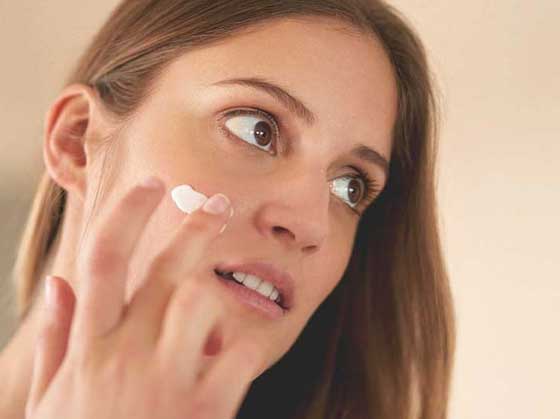
Tackling acne and finding a treatment that works for you can be a rewarding experience, but often the scars left behind can be just as much a knock to the sufferer's confidence as the spots themselves. From boxcar scars to rolling scars, toothpick scars to keloids, the marks left by acne need careful treatment if you're looking to reduce their appearance over time. Here, nine skin experts share their advice on treating acne scars.
Linda Blahr
National head of training and science at Skinceuticals
“The skin′s texture becomes rough, and post-inflammatory hyperpigmentation (PIH) can linger long after blemishes subside. The Skinceuticals Blemish + Age line-up is an anti-ageing, anti-blemish powerhouse. This potent, oil-free treatment is designed to diminish imperfections while correcting signs of ageing and scarring. The combination of dioic acid, capryloyl salicylic acid, and salicylic acid controls sebum production, reduces post-blemish hyperpigmentation, and provides targeted, lipid-soluble exfoliation. Glycolic acid and citric acid minimise fine lines and wrinkles, smooth rough texture, and improve irregularities. I would also suggest a Dermapen or Dermaroller treatment (every two to three months) to treat deeper acne scars properly. This is what we call integrated skincare.
2. Debbie Thomas
Facialist and skincare expert
“The type of scarring present will affect the treatment choice and the possible results. Acne scars can be very superficial (flat) and be red or brown marks which are quite easy to improve. Deeper, rolling scars which leave shallow dips in the skin 2 to 5 millimetres wide can normally be improved 30 to 70 per cent. Ice pick scars, which are much deeper but only 1 to 2 millimetres wide, are the most difficult to improve. Most scarring treatments will leave the skin looking red, bumpy or scaly for two to five days after the treatment, so the treatment does need to be planned. I always recommend the application of Oxygenetix Foundation which can be used straight after all skin treatments, not just to cover the redness but also to help the skin heal quicker. The most common treatments for scaring are lasers, microneedling and peels. We also offer the Enerjet treatment which shoots a high pressure blob of liquid in to the scar to break it up more effectively. All of the treatments will need to be repeated several times for up to a year, in order to see results, as they all work by re-injuring the scar tissue forcing it to repair again. Every person responds very differently to treatments depending on their own healing and repair process. I always get the best results by combining several types of treatment - for example a medium peel, with microneedling and mesotherapy will give a much better result than just microneedling.”
3. Susanne Kaufmann
Founder of Susanne Kaufmann
With acne, it′s important to get a regular facial. Here, we usually do the base treatment with lymphatic drainage. As long as the acne scars are relatively fresh, we recommend an ultrasound treatment and the weekly use of our Enzyme Peel. If the scars are older, you cannot improve or remove them naturally.
4. Teresa Tarmey
Facialist and skincare expert
“Having suffered with acne myself, I can vouch for my comments. The best treatment for acne scarring is any form of resurfacing. The one I used and continue to use in treatments is Fractional Radio Frequency by Venus Viva. I then get my clients to use my at-home microneedling kit for added results and maintenance. It′s such an amazing result. Fractional every four to six weeks and my kit once per week in between sessions.”